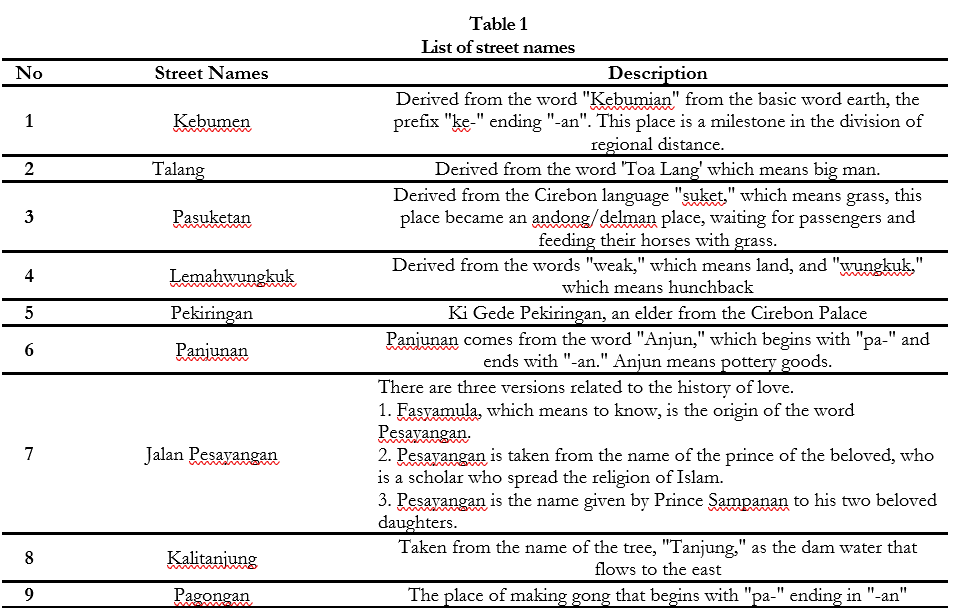Indigenous knowledge in Cirebon city's road toponymy
DOI:
https://doi.org/10.22219/kembara.v10i2.35254Keywords:
Anthropolinguistics, Local wisdom, ToponymsAbstract
The purpose of this study was to describe road toponymy in Cirebon City, identify the origin of road toponymy in Cirebon City, and identify local wisdom in toponymy in Cirebon City. This research examines the local wisdom of road toponymy in Cirebon City. Local wisdom is a form of agreement that becomes a legacy for guidance in social life and can be a benchmark for building civilization and the personal identity of the nation, as well as selecting global culture. The methods of research use qualitative methods with an anthropolinguistic approach. The research data collected are street names in the city of Cirebon. The source of data obtained in the form of street names in Cirebon City contains local wisdom. Data collection methods used were observation, interview, and documentation methods. Data collection techniques include reading, note-taking, and interview techniques. The data analysis technique used was the intralingual pairing method. The results showed that there are 21 street names in Cirebon City. The road names in Cirebon City tend to be influenced by social aspects rather than physical aspects. Street names that contain historical stories and local wisdom in them include Karanggetas, Kanggraksan, Pesayangan, Panjunan, and Lemahwungkuk. Meanwhile, street names influenced by place or building names include Pasuketan, Parujakan, Talang, Kebon Belimbing, and Kolektoran. According to 21 names of streets in Cirebon City, there are only 9 street names that have local wisdom, namely Road Talang, Road Panjunan, Road Pesayangan, Road Pulasaren, Road Sukalila, Road Pekalangan, Road Karanggetas, Road Pekarungan, and Road Larangan.
Downloads

Downloads
Published
How to Cite
Issue
Section
License

This work is licensed under a Creative Commons Attribution 4.0 International License.
Authors who publish with The KEMBARA: Jurnal Keilmuan Bahasa, Sastra, dan Pengajarannya (e-Journal) agree to the following terms:
Articles are published under the Creative Commons Attribution 3.0 Unported License (CC-BY 3.0).
Under the CC-BY license, authors retain ownership of the copyright for their article, but authors grant others permission to use the content of publications in KEMBARA: Jurnal Keilmuan Bahasa, Sastra, dan Pengajarannya (e-Journal) in whole or in part provided that the original work is properly cited. Users (redistributors) of KEMBARA: Jurnal Keilmuan Bahasa, Sastra, dan Pengajarannya are required to cite the original source, including the author's names, KEMBARA: Jurnal Keilmuan Bahasa, Sastra, dan Pengajarannya (e-Journal) as the initial source of publication, year of publication, volume number and DOI (if available).
Authors may publish the manuscript in any other journal or medium but any such subsequent publication must include a notice that the manuscript was initially published by KEMBARA: Jurnal Keilmuan Bahasa, Sastra, dan Pengajarannya (e-Journal).
Authors grant KEMBARA: Jurnal Keilmuan Bahasa, Sastra, dan Pengajarannya (e-Journal) the right of first publication. Although authors remain the copyright owner, they grant the journal the irrevocable, nonexclusive rights to publish, reproduce, publicly distribute and display, and transmit their article or portions thereof in any manner.






_.png)
















